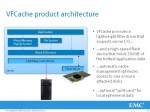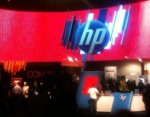EMC VFCache (née Project Lightning) is a fairly simple offering: A server-based PCIe flash card that acts as a read cache with no integration with storage arrays or hypervisors. But EMC’s entrance into the host-based flash storage market is a powerful demonstration of the wave of disruption caused by flash-based storage and high-performance computing.
Gestalt IT
Nimbus E-Class: The First Big, Redundant, All-Flash Enterprise Array
The new Nimbus Data E-Class comes just at the right moment, with 500 TB of capacity, a fully redundant “dual active†controller architecture, massive performance (even InfiniBand), and complete feature set (once VAAI is released).
HP’s Mighty Stumble
HP stumbled mightily in 2011, and it had nothing to do with product or people. Even sales remained strong, though the PC business is changing. HP’s mighty stumble was a crisis of confidence due to a chain of shenanigans at the very top. This culminated with the short reign of Léo Apotheker, leaving HP to reassure the market of its strategy.
Why Should Anyone Take Dell Seriously in Enterprise Storage?
For a massive IT company, Dell sure doesn’t get the kind of respect given their competitors. Time and again, I’ll hear the sneers about Dell being little more than a “box shifter†who doesn’t “get†real enterprise IT needs. After a series of acquisitions in storage and networking, Dell is trying to stake a claim as a serious competitor to HP, IBM, Oracle, and the like. But why should anyone take Dell seriously, especially in enterprise storage?
Virtual Machine Mobility: Of What, and to Where and in What State?
Moving cold virtual machine images from system to system, or even across great distances, is one of the main selling points of server virtualization. But it becomes much more difficult to manage movement of virtual machines that are still running, especially outside cluster or across WAN links. When talking about virtual machine mobility, it is important to consider what is being moved, the state it is in, and where it is going.



